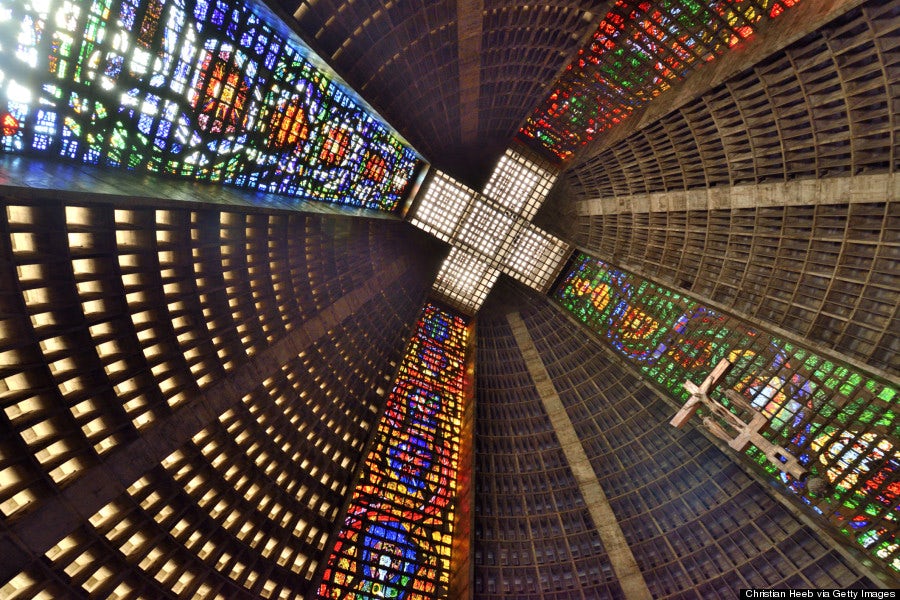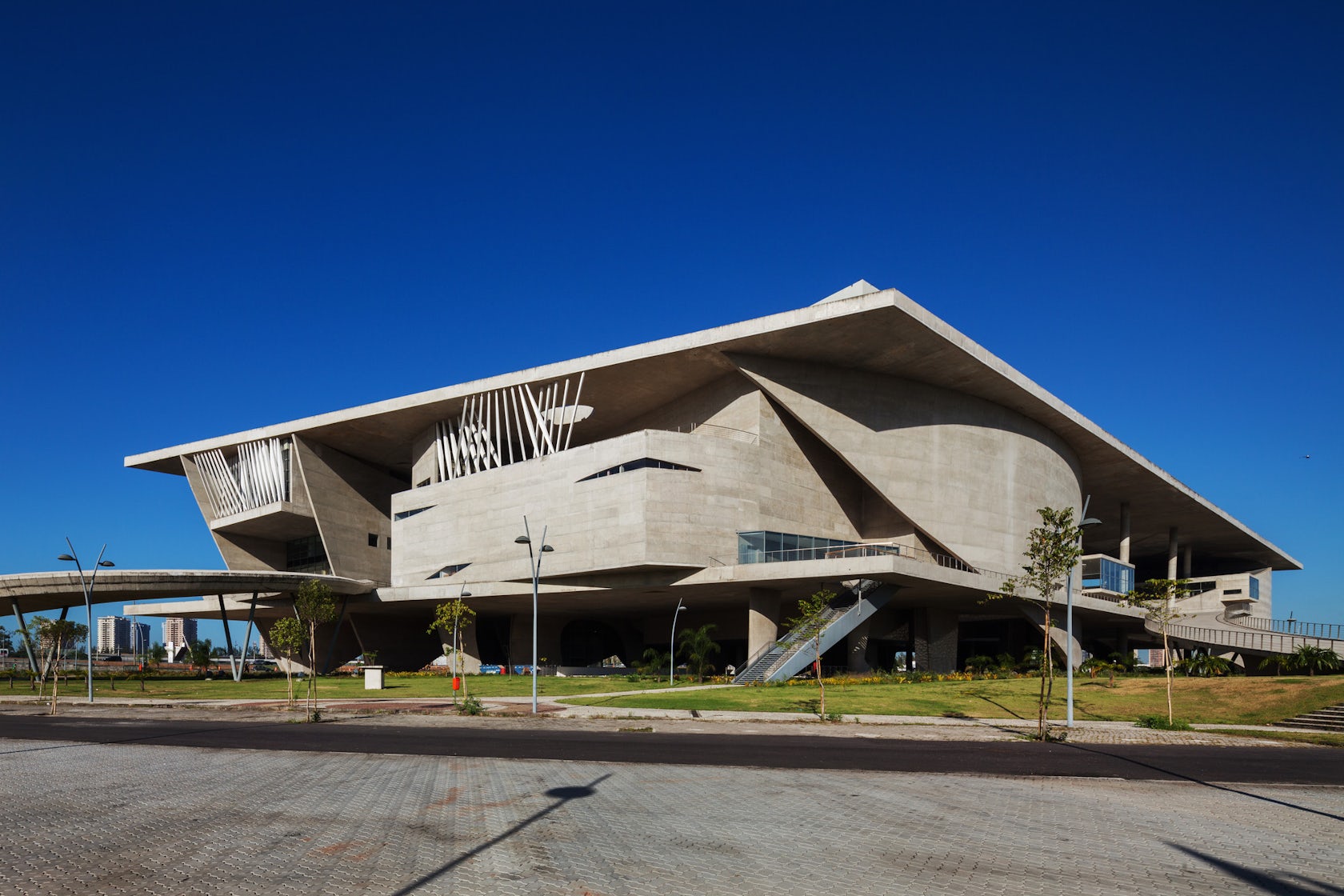In this ongoing series, we aim to give you a travel guide to cities around the globe — with an architectural twist. These tours offer chances to experience great design away from the traditional tourist hotspots and an alternative angle on the world’s metropolises. After New York City, Los Angeles, Detroit and Havana, we go south to the beating heart of Brazil: Rio de Janeiro.

Wake up at: Hotel Santa Teresa, refurbished by Tato Bittencourt Arquitetos Associadosand extended by JDS / Julien De Smedt Architects and nanda eskes | arquitetura
Perched on the hills of Santa Teresa — a bohemian chic neighborhood of Rio de Janeiro often compared to Paris’s Montmartre — this formerly derelict mansion features an artful decoration that blends contemporary minimalism with the tropical woods, textiles and vegetation of this highly biodiverse region of Brazil. From the lush garden, or through the light-filtering shutters of the rooms, you can take in the whole view of the city, seemingly far away at the bottom of the mountain.

Walk to: Museum Chacara do Céu, Santa Teresa, by Wladimir Alves de Souza
In this modernist mansion designed in 1954 lived the French art collector Raymundo Ottoni de Castro Maya, whose collection you can now visit in his charming home. Neighboring the Parque das Ruinas — the romantic ruins of Brazilian heiress Laurinda Santos Lobo’s mansion — this museum is surrounded by meditative gardens overlooking the city’s Centro, where you can …


Photo by Christian Heeb via Getty Images
… Gaze in awe at: Catedral Metropolitana de São Sebastião by Edgar Fonseca
Known as the “New Cathedral,” as it replaced the existing seat of the Archdiocese, Edgar Fonseca’s project for the Catedral Metropolitana applies a brutalist architecture to the traditional Mayan pyramid style. Built between 1964 and 1979, the interior of the cathedral is dramatized with four rectilinear stained glass windows that rise 64 meters (210 feet) up from the floor to the cross-shaped window at the peak of the pyramid.



Take a boat to: Niterói Contemporary Art Museum by Oscar Niemeyer
Completed in 1996, this museum faces a panoramic view of Rio from its perch above Guanabara Bay. The museum is currently closed for renovations, but the municipality of Niterói is also home to Niemeyer’s Teatro Popular, along the Caminho Niemeyer, so it is definitely worth a visit to get a taste of the architect’s iconic designs. For the curious engineer, you can go between Niterói and Rio de Janeiro by driving over the longest bridge in the Southern Hemisphere — an astounding 13,290 meters (43,600 feet) long!


Photographs by leonardo finotti
Grab a drink on the roof of: Museu de Arte do Rioby Bernardes Arquitetura
The Museu de Arte do Rio was born out of three existing buildings: the 1910 Palacete Dom João, the old Rio bus station and the Civil Police Hospital. All three buildings feature very singular styles, and Bernardes Arquitetura resolved those differences by connecting the parts of the new museum through a suspended walkway and an undulating roof structure that serves to cover the rooftops of the buildings and proposes an elegant movement to animate the port area of Rio de Janeiro. Bernardes Arquitetura received an A+Award in 2014 for this project.


Photographs by Bernard Miranda Lessa
Gaze in awe and confusion at: Museu do Amanhã by Santiago Calatrava
Neighboring Bernardes’ Museu de Arte, next to Guanabara Bay, Calatrava’s Museum of Tomorrow carries the architect’s signature style to extremes with a 75-meter (246-foot) overhang and skeletal wings that run through the length of the building. It was completed in 2015 as part of the revitalization plan for Porto Maravilha.

Take a stroll on: Copacabana Promenade by Roberto Burle Marx
The iconic Brazilian landscape architect designed the boardwalk of Copacabana beach in 1971, interpreting a traditional Portuguese paving pattern into waves of black and white stones. The design has become an archetype throughout the city, where variations of the black and white pattern bring energy and cleanliness to the streets – the above picture shows the patterned sidewalk replicated on the boardwalk of Ipanema beach. Look out in the morning and you will regularly see shop owners sweeping the pavements in front of their premises, adding more sand between the stones or fixing up parts of the sidewalk.


Photographs by Nelson Kon
See a show at: Cidade Das Artes by Atelier Christian de Portzamparc
In 2013, in a recently developing district of Rio, Barra da Tijuca, French architect Christian de Portzamparc reinterprets Modernist Latin American architecture into a contemporary project planned to house a concert room, movie theaters, dance studios, exhibition spaces, restaurants, a media library and more. The building, as its name suggests, acts as a microcosmic city, where vast public spaces encourage cultural exchange and spontaneous activity throughout the complex.


End the day at: Instituto Moreira Salles by Olavo Redig de Campos
In Gávea — an affluent residential neighborhood that sits between the high-end Leblon and Jardim Botânico neighborhoods on one side and bordered by Rocinha, the largest favela in South America counting over 150,000 residents, on the other — this house formerly belonged to banker and diplomat Walter Moreira Salles. A landmark of 1950s modern architecture, the Institute is a delightful haven of peace and quiet, where one can view exhibitions or relax in gardens that were designed by Roberto Burle Marx.
All images by Chloé Vadot unless otherwise noted









